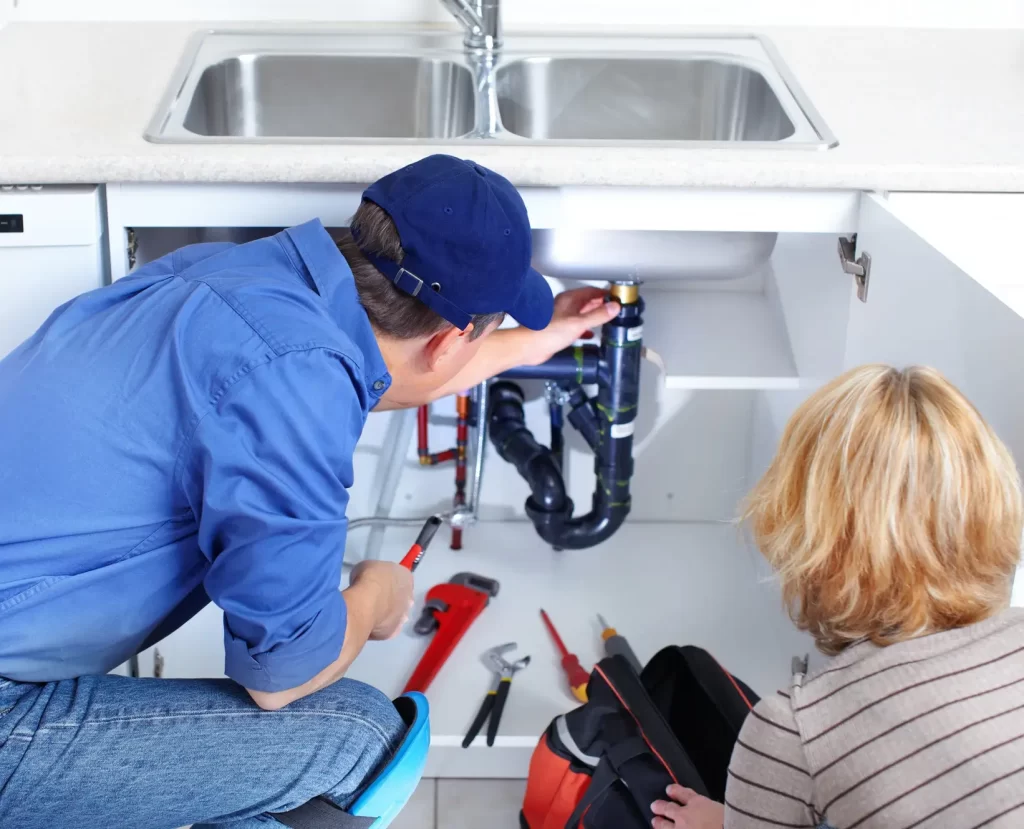How to Fix Kitchen Plumbing
 The kitchen is one of the busiest areas of any home, and its plumbing works hard to keep everything running smoothly. From the sink to the garbage disposal, the dishwasher to the water pipes, the kitchen has many components that can wear out or break over time. Fortunately, many common kitchen plumbing problems can be fixed with a little knowledge, the right tools, and a little patience.
The kitchen is one of the busiest areas of any home, and its plumbing works hard to keep everything running smoothly. From the sink to the garbage disposal, the dishwasher to the water pipes, the kitchen has many components that can wear out or break over time. Fortunately, many common kitchen plumbing problems can be fixed with a little knowledge, the right tools, and a little patience.
Identify the problem first
Before you reach for a wrench, it’s crucial to correctly identify the problem. Common kitchen plumbing problems include dripping faucets, clogged drains, leaky pipes, faulty garbage disposals, and low water pressure. Look where the problem is occurring—under the sink, near the faucet, or by an appliance—and check for visible signs of leaks, corrosion, or blockages. Pinpointing the problem will help you choose the right solution and avoid wasting time or causing further damage.
Fix a Leaky Kitchen Faucet
A dripping faucet is not only annoying, it can also waste gallons of water over time. Most faucet leaks are caused by worn gaskets, seals, or cartridges. To fix them, turn off the water under the sink, then disassemble the faucet with a screwdriver and wrench. Inspect the components and replace any damaged gaskets or cartridges.
Unclog a Kitchen Drain
Clogged kitchen drains are usually caused by grease, food debris, or soap buildup. The simplest first step is to pour a baking soda and vinegar mixture into the drain, then wait 10 to 15 minutes before rinsing with hot water. If that doesn’t work, use a suction cup to dislodge the clog. For more stubborn clogs, remove and clean the P-trap under the sink. Place a bucket underneath, unscrew the fittings, and remove any debris. Reinstall the trap and check for proper drainage.
Fixing a Water Leak Under the Sink
Leaks under the kitchen sink often result from loose fittings, damaged gaskets, or broken pipes. Start by drying the area and carefully inspecting the pipes. Tighten any loose fittings and replace any worn washers or gaskets. When a pipe breaks, replacing that portion may be unavoidable. Until you can make a permanent repair, use epoxy putty or pipe tape to contain small leaks.
When to Call a Professional
While many kitchen plumbing repairs can be done by DIY experts, there are some situations where you need a qualified plumber. If you have persistent leaks, recurring clogs, low water pressure, or suspect damage to your water main, it’s best to call a professional. Also, if you’re not familiar with electrical components like garbage disposals or dishwashers, don’t take any chances—leave it to an expert.
Conclusion
Fixing your kitchen plumbing doesn’t have to be a chore. With a basic understanding of the system and a few essential tools, you can handle many common problems yourself. Regular maintenance and prompt response to problems will help prevent more serious damage and costly repairs. And when in doubt, don’t hesitate to call a professional to ensure your kitchen remains functional, safe, and leak-free.
Call Emergency Plumber in Sutton. We are 24 hours available.
